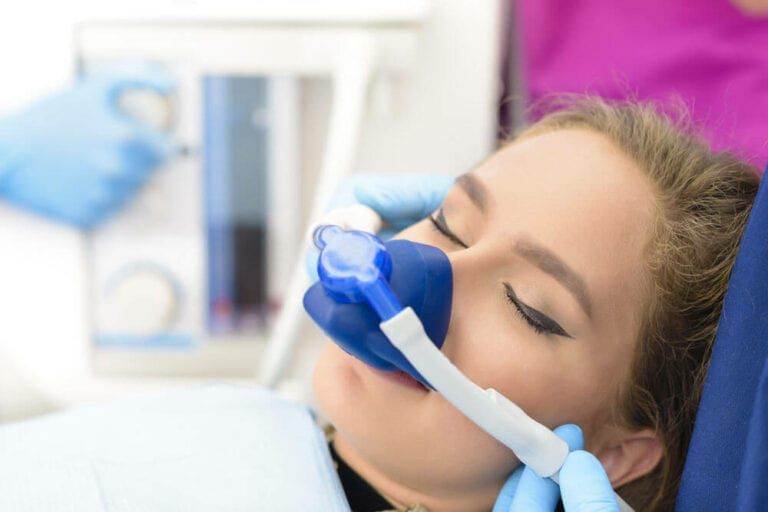Nitrous

Nitrous oxide (N2O), more commonly referred to as laughing gas, is a mild sedative agent that safely and effectively manages pain and anxiety during dental treatment. The colorless and odorless nitrous oxide is mixed with oxygen and inhaled through a small mask that fits over your nose. Patients are asked to breathe normally and should feel the effects of the laughing gas within minutes. Contrary to its name, laughing gas does not necessarily make you laugh. The nitrous oxide slows down your nervous system to make you feel less inhibited. You may feel light-headed, tingly, or even heaviness in your arms or legs. Ultimately, you should be calm and comfortable throughout the procedure. You might even giggle a time or two.
Dentists choose nitrous oxide because it is a safe and effective method for sedation. The laughing gas works quickly to relax patients, and the effects wear off quickly by breathing pure oxygen through a mask. Plus, the nitrous oxide does not put you to sleep, so you can hear and respond to any of the dentist’s questions or instructions.
Most patients do not experience adverse reactions to laughing gas. However, they can occur if the nitrous oxide levels rise too high or if the amount being inhaled quickly changes. Possible side effects can include:
- Headaches
- Shivering
- Excessive sweating
- Nausea or vomiting
- Sleepiness
After the nitrous oxide is turned off, patients need to receive oxygen for at least five minutes to avoid headaches. The oxygen purges the remaining gas from the lungs while helping the patient become more alert and awake. Patients can also help prevent nausea or vomiting by eating lightly before the procedure and avoiding a big meal for up to three hours afterward. Consult your dentist on whether or not it is safe to drive post-procedure.
